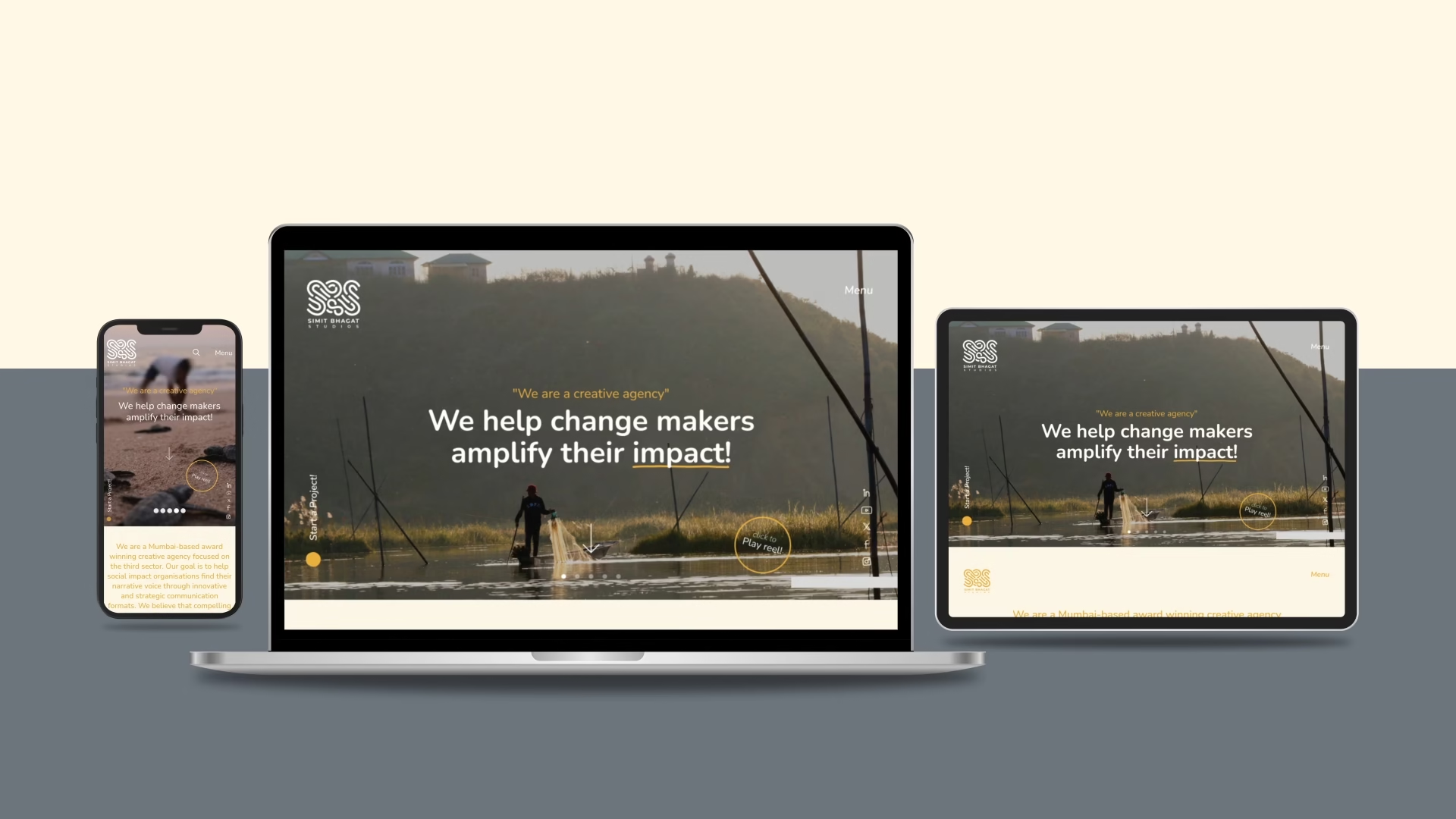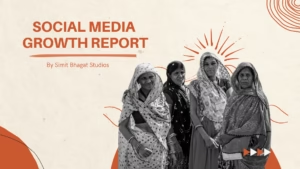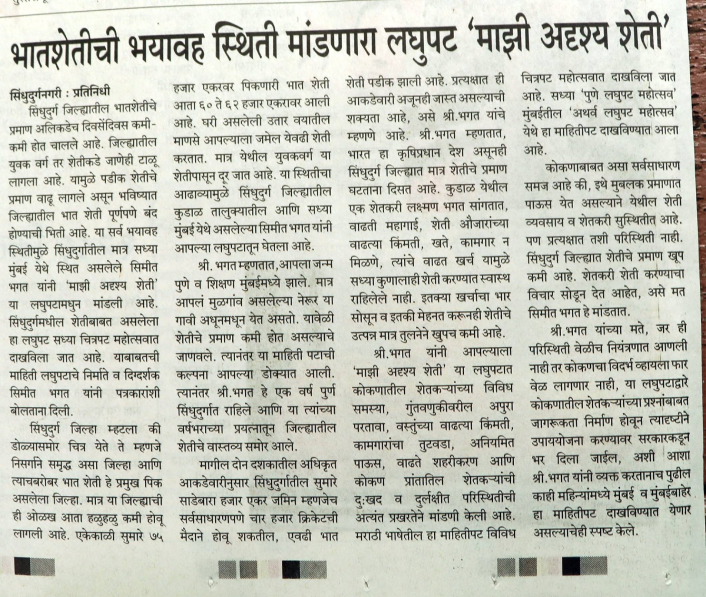A website isn’t just a digital placeholder. For many nonprofits, it’s where introductions happen. It’s often the first time a donor, a volunteer, or a policymaker hears your story. It can be the reason they choose to support your mission or quietly move on. And yet, in the rush to get something online, many organisations create websites that sit untouched for years. No updates, no direction, no real sense of voice.
In Episode 13 of our Stories of Change podcast, we spoke with Swanand Deo, founder of Design Junction, about this very issue. Having built websites for social enterprises and nonprofits alike, he’s seen how these platforms can either lift a mission or quietly fail it. He noted how often nonprofits rely on freelancers or interns to set things up, only to lose track of how to maintain or grow what they’ve built.
“If you’re making a website just for the sake of it… it’s fine even if you don’t make it,” he said. It was blunt, but not wrong.
“If you’re making a website just for the sake of it… it’s fine even if you don’t make it.”
That conversation got us thinking. What separates websites that work from those that fade into the background? What makes someone pause, engage, and want to help? In this blog, we explore five qualities that shape a meaningful nonprofit website, and we highlight five organisations that embody them, each in their own way.
1. Clarity from the Start: Ambuja Foundation
Some websites try to say everything at once. Others barely say anything at all. In both cases, you are left unsure where to look or why you should stay.
Ambuja Foundation, a pan India nonprofit working on rural prosperity through water, agriculture, health and education, does the opposite. When you open the site, the earthy colours terracotta, yellow and beige make it feel steady, warm and inviting. The menu is easy to follow, with clear drop-downs under About Us, Programmes and Our Presence. A visible “Contact Us” button sits right on top, so getting in touch feels straightforward from the very beginning.
The navigation is intuitive, with clearly labelled drop-downs.
The first fold rotates bold, animated banners with lines like “Poverty in rural India is rife” and “Together let’s generate prosperity,” quickly setting the tone. Below that, you’re guided to their approach and programmes with light animation and interactive links.
Everything is easy to find, clearly explained, and visually coherent. Ambuja’s site doesn’t try to do everything at once; it leads with intention, letting users explore at their own pace.
2. Simple, Seamless Browsing: Thirst Relief
The days of websites being built just for desktops are long gone. Most people now explore websites on their phones. Swanand noted how often he sees sites that still don’t function well on smaller screens, and how that instantly pushes users away.
Thirst Relief is a nonprofit that provides clean, sustainable drinking water to underserved communities, and its website reflects a deep understanding of user-friendly, mobile-first design. It doesn’t scream for attention. Instead, it flows. The layout adjusts smoothly to mobile and tablet views. The buttons are exactly where you’d expect them. And the visuals guide you gently, never overwhelming.
There’s a quiet confidence in the site’s structure. It trusts the user to find their way, and it helps them along. For anyone browsing on the go, or in a rural area with patchy internet, it works just as well as it does in a city office. And that kind of design matters more than we think.
3. One Clear Ask, Not Many: CRY India
When you arrive on a homepage and see ten different buttons asking you to do ten different things, it’s easy to feel lost. Many nonprofits struggle with this; they want users to explore everything at once. But in trying to say everything, they end up saying very little.
CRY India is an NGO dedicated to children’s rights, and its website follows a clear, focused path to drive engagement. The first thing you notice is a bright yellow “Donate Now” button. Just below, a line reads, “Let’s ensure happy childhoods for India’s children.” There’s a simple box: “Yes, I want to help.” That click takes you directly to a donation page.
CRY India’s site quietly walks beside you, pointing out moments where your help could matter.
As you scroll, short video clips of children playing draw you in. Occasionally, a small message pops up, prompting you to donate again, but it’s never intrusive. It’s as if the site is quietly walking beside you, pointing out moments where your help could matter. It doesn’t push, it invites. That’s the difference.
4. Let the Story Lead: Women’s Funding Network
Numbers matter, of course, but on their own they rarely stay with people. It is the story wrapped around those numbers that people hold on to. One honest photograph from the field can outlast pages of careful writing. A real face, a real voice, a single unscripted moment, that is what lingers.
The Women’s Funding Network, the world’s largest philanthropic network for women and girls, fully embraces this. Its website opens not with data, but with bold, engaging language. The fonts are strong, but welcoming. The photos don’t feel staged; they feel real. Each section tells a part of the story: of women leading, fighting, organising, and transforming.
Images from the field often carry more weight than paragraphs of well-written text.
It doesn’t feel like a digital report. It feels like a movement. You’re not just reading about campaigns, you’re witnessing them. The storytelling draws you in, not through flair, but through feeling. And that feeling stays with you.
5. Keep It Current, Keep It Caring: The Humane League
The Humane League’s website, run by an international nonprofit working to end the abuse of farm animals, feels active from the very first scroll. The layout is clean and modern. Most of the page sits in navy, black and white, with small bursts of red, yellow and lime green that draw your eye without feeling loud. Those colours are not just decoration. The red points straight to the Donate button at the top, the bright yellow frames the newsletter Subscribe box, and the sharp green panels are used where trust and credibility really matter.
They also make giving feel flexible. Visitors can pick Give Monthly if they want to stay involved over time, or click More Ways to Give if they prefer a different kind of support.
These pops aren’t random; they highlight what matters most.
As you scroll, stories of animal cruelty and factory farming surface through videos, infographics, and campaign banners. A soft blue donation section features two piglets, gently pulling at your heart. Just below, a bright green panel reads Give with Confidence, supported by endorsements and donor trust badges.
Rotating banners, animated stats, and real-time numbers keep the content dynamic. Further down, a newsletter box with a bold yellow “Subscribe” button, shop links, and volunteer calls add to the experience. Every detail, visual or structural, feels intentional. The site doesn’t just inform. It builds belief.
The Website That Keeps Working
A nonprofit website isn’t just a place to host information. It’s where first impressions are made. It’s where trust begins. A website functions as a marketing tool even while you’re asleep. Whether it’s day or night, someone somewhere is landing on your page and deciding what to do next.
If you’re someone who cares about how nonprofits can tell better stories and connect more deeply, subscribe to our newsletter. It’s filled with examples, insights, and behind-the-scenes reflections from communicators who want their work to matter, both online and off.











